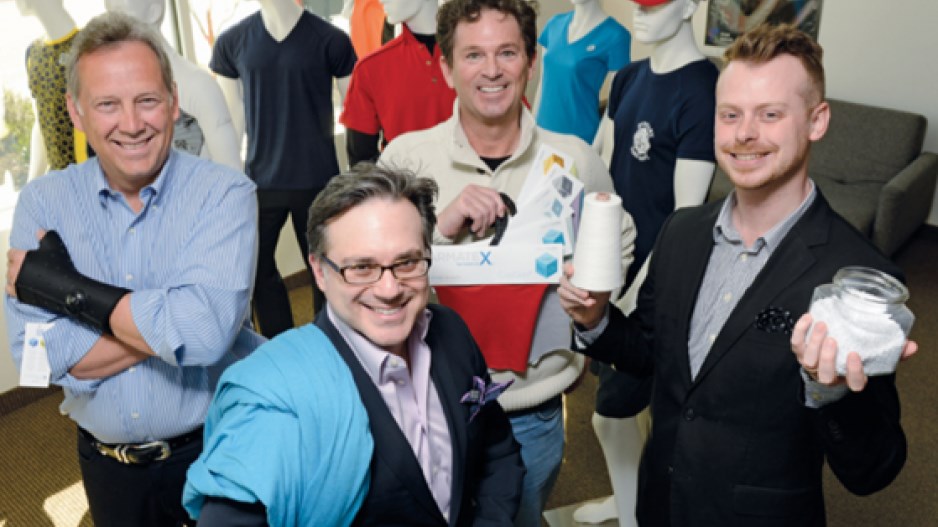When Garmatex Technologies Inc. started talking to investment bankers a few months ago about raising $15 million through a private placement, the bankers suggested a different strategy: go public.
"We weren't looking to do an IPO in Canada or at this time," said Garmatex CEO Martin Doane. "We've been approached by a couple of investment dealers who have convinced us that it would be timely to do an IPO, so we have decided to take their advice."
Garmatex plans to file a prospectus on the Toronto Stock Exchange in the coming weeks. The company also plans to list on a U.S. exchange in a year or two, Doane said. Just a year ago, going public might not have been an option for the company. But industrial and high-tech stocks are suddenly hot again, thanks in no small part to the flight of capital from the mining sector.
"There is money on the sidelines," Doane said. "More conventional industrial companies are coming into favour and technology companies are coming into favour. We're a unique combination of technology applied to a mature industry."
The company hopes to raise $15 million through its IPO, which it plans to use to accelerate its business development. Garmatex started out about eight years ago as Firstar Sports Apparel, making high-performance clothing for athletes.
"Hockey has some very unique problems associated with sweat, and wicking and odour," Doane said. "In turning our minds to solving those problems, we ended up inventing a whole new way of manufacturing fabrics."
The company has had some success as a sportswear maker. The Saskatchewan Roughriders and Edmonton Eskimos are among some of the sport teams using Firstar apparel.
But as an apparel maker, it simply could not compete with companies like Under Armour Inc. (NYSE:UA) and Bauer Performance Sports Ltd. (TSX:BAU), so the company decided it made more sense to become a primary fabric maker and supplier.
"We said, 'It's a lot easier for us to go sell hundreds of millions of dollars of material than it is to try to be a $4 million brand against Nike [Inc.] (NYSE:NKE) and Bauer and Under Armour,'" said Keith Gracey, Garmatex's executive chairman.
Working with a partner company in Taiwan, Winwave Technology Corp., Garmatex has developed 40 different types of synthetic fabrics that are engineered to have certain properties – cooling, insulating and wicking, for example. It also has developed a fabric called T3 that is designed for tight-fitting sportswear and that prevents binding and bunching.
The company says its fabrics are different from other "smart" textiles in that it doesn't use the "China dip" method, in which a fabric is chemically treated. Fabrics can be treated with silver filaments, for example, or titanium dioxide to provide antimicrobial properties to prevent sportswear from getting smelly. Eventually, though, through washing, those compounds can degrade.
"We don't need to dip filaments or fabrics into solutions," Doane said. "When we do import additives into our fabrics, we do it in such a way that there's an intense chemical bond between the fabric and the additive. We can put a garment or a sheet in a commercial launderer and run it through 50 times and have no performance degradation whatsoever."
"Smart" textiles isn't just a buzzword, said Frank Ko, Canada Research Chair professor in advanced fibrous materials at the University of British Columbia.
Advances in nanotechnology and reduction chemistry are allowing polymers to be engineered at the molecular level to give them some amazing properties, including the ability to conduct electricity in order to monitor vital signs.
The global textile industry is worth $500 billion, Ko said. But the fabrics Garmatex has developed are not just for clothing. In fact, the company thinks its biggest markets may be in medical and industrial applications.
Automotive and aeronautical companies could use the fabric for everything from seats to door sealants, Doane said, and the medical device industry could use it as a replacement for the neoprene used for hand and foot braces.
"The lowest-hanging fruit is definitely performance apparel," Doane said. "A very close second is the medical device and hospital and hospitality segments."
"I think they're doing the right thing," Ko said. "Multi-functional textiles is really growing."
Garmatex employs 30 people in Langley but is planning to relocate to Vancouver in the coming months.




